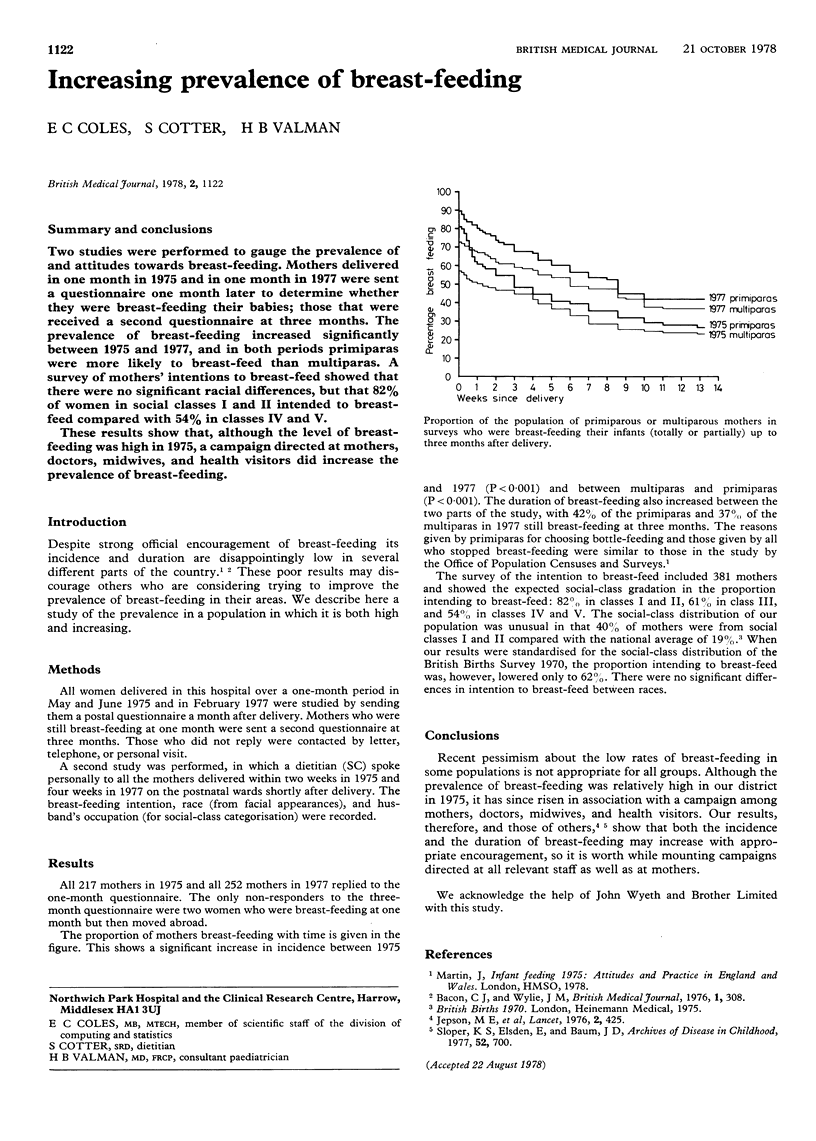Abstract
Two studies were performed to gauge the prevalence of and attitudes towards breast-feeding. Mothers delivered in one month in 1975 and in one month in 1977 were sent a questionnaire one month later to determine whether they were breast-feeding their babies; those that were received a second questionnaire at three months. The prevalence of breast-feeding increased significantly between 1975 and 1977, and in both periods primiparas were more likely to breast-feed than multiparas. A survey of mothers' intentions to breast-feed showed that there were no significant racial differences, but that 82% of women in social classes I and II intended to breast-feed compared with 54% in classes IV and V. These results show that, although the level of breast-feeding was high in 1975, a campaign directed at mothers, doctors, midwives, and health visitors did increase the prevalence of breast-feeding.
Full text
PDFPage 1122

Selected References
These references are in PubMed. This may not be the complete list of references from this article.
- Bacon C. J., Wylie J. M. Mothers' attitudes in infant feeding at Newcastle General Hospital in summer 1975. Br Med J. 1976 Feb 7;1(6005):308–309. doi: 10.1136/bmj.1.6005.308. [DOI] [PMC free article] [PubMed] [Google Scholar]
- Jepson M. E., Smith B. A., Pursall E. W., Emery J. L. Breast-feeding in Sheffield. Lancet. 1976 Aug 21;2(7982):425–426. doi: 10.1016/s0140-6736(76)92450-8. [DOI] [PubMed] [Google Scholar]
- Sloper K. S., Elsden E., Baum J. D. Increasing breast feeding in a community. Arch Dis Child. 1977 Sep;52(9):700–702. doi: 10.1136/adc.52.9.700. [DOI] [PMC free article] [PubMed] [Google Scholar]


